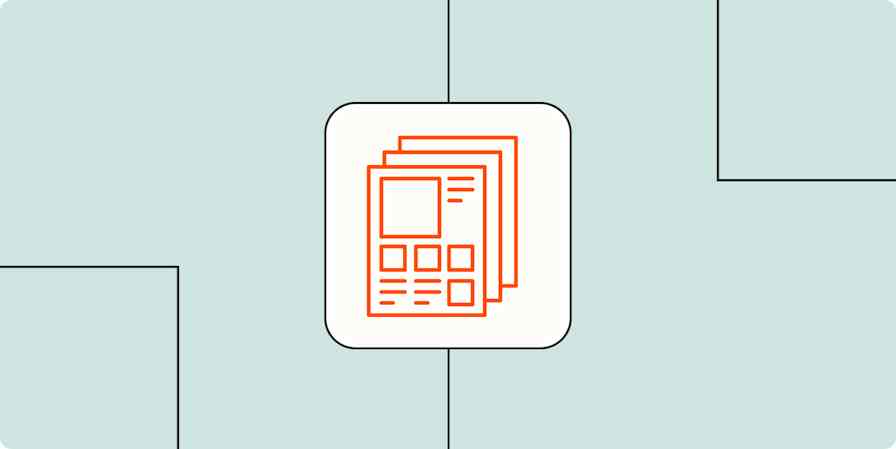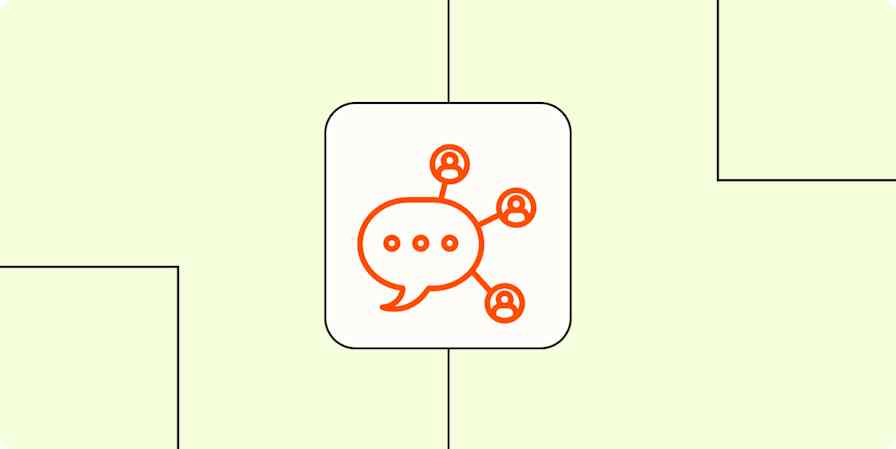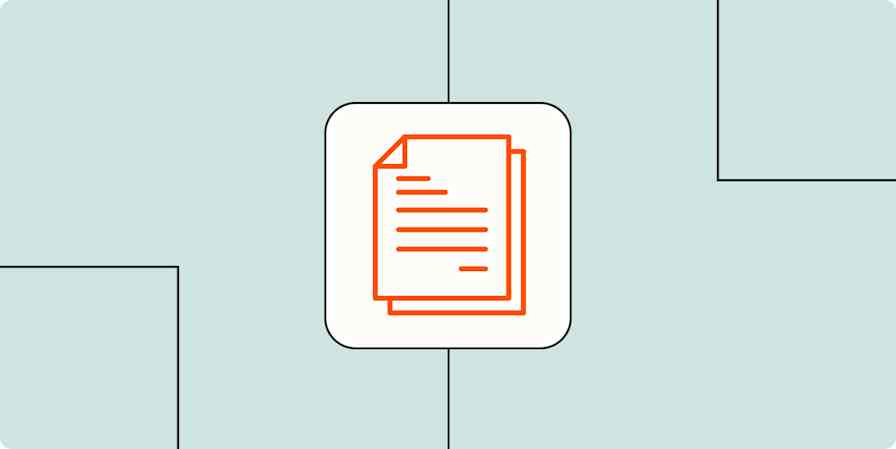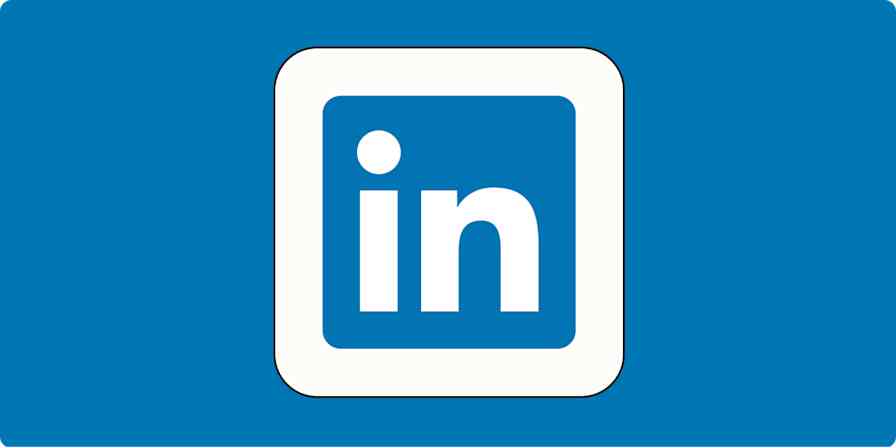At Zapier, we're all about leveraging AI and automation to solve challenges—with the end game of being able to focus more on priority and strategic work.
With our suite of AI features, you can easily build mission-critical systems across your organization to help you scale your impact—and bring any automation idea to life, no matter how complex. (And no, you don't need to know how to code.)
To help you better understand how to leverage AI and automation, we reached out to different departments at Zapier and put together some of the best examples. That includes building Zaps with AI apps, training AI-powered agents to handle internal operations, and using Zapier Chatbots to talk to customers and prospects.
Here are some of the top ways we're using AI across the organization—which you can be a part of, too.
Zapier is the most connected AI orchestration platform—integrating with thousands of apps from partners like Google, Salesforce, and Microsoft. Use interfaces, data tables, and logic to build secure, automated, AI-powered systems for your business-critical workflows across your organization's technology stack. Learn more.
Table of contents
To get started with a Zap template—what we call our pre-made workflows—just click on the button. It only takes a few minutes to set up. You can read more about setting up Zaps here.
Customer success operations
Carrying out customer calls helps both our sales ops and customer success teams get a detailed glimpse into the customer journey, see what's working, and better understand what Zapier users need.
And now, thanks to AI, we can streamline this process from start to finish. Here's how:
One workflow allows team members to reduce the prep time before customer calls in Gong by having AI look at a record or deal in HubSpot, gather information about the company, come up with any automation challenges they may be experiencing, then share it with the right person in Slack.
Another AI workflow pulls recordings of customer calls from the sales CRM, summarizes each call with a quick overview, then posts it in Slack, so the team can learn from the interactions.

That includes using AI to analyze and share customer sentiments, giving us a comprehensive view of a customer's interaction with the platform so we can help improve our product.
Create meeting transcripts and summaries with ChatGPT from audio files
Sales
Determining which leads are most likely to convert can take up a lot of time and resources for Zapier's sales teams. That's why AI is used to bridge that gap.
First up, our sales teams use AI and Zapier to generate transcripts of their sales calls with leads. AI then creates a summary of those meetings, and Zapier adds that information automatically to the right lead in HubSpot.
That way, sales managers have better insight into the deals that are nearer closing, and know who they should be spending time nurturing, without the administrative overhead.
Onboarding and HR
When it comes to sending out forms and surveys, our HR team deals with their fair share. There's a lot of ground to cover, from surveys that cover onboarding experiences to general employment feedback forms and retreat assessment surveys.
That's why our onboarding team uses AI to help them collect and analyze sentiment ratings (positive, neutral, or negative) for every response received. It's a great way to save valuable time trying to understand the overall sentiment towards survey topics, so nothing ever falls through the cracks.
Send Slack channel messages with ChatGPT responses generated from new Typeform entries
Analyze new Typeform entries with ChatGPT and send to a Google Sheet
Technical support operations
Effective escalation management (dealing with technical incidents) is a pretty important piece of the puzzle when it comes to ensuring customer satisfaction, on top of managing a support team's regular workload. At Zapier, AI helps streamline some of these processes.
One team member built a ChatGPT-powered bot and pulled it into a Slack support channel. It helps them troubleshoot issues with Zaps, get automation ideas, and learn how to use Zapier features more quickly.
Start a conversation with ChatGPT when a prompt is posted in a particular Slack channel
Another workflow involves using AI to create a formatted daily summary of all the previous day's activities in Slack. This includes all the escalated tickets and issues resolved and discussed for visibility, helping enhance team communication.

Connect Schedule by Zapier and ChatGPT to get started and see what you can build.
Another nimble workflow that saves time? Creating the copy for status page updates based on templates and rules provided by the team. With the Zap below, whenever the support team specialists submit an entry in Typeform that describes an issue, ChatGPT will create a status page message and send it to Slack for approval. Then a webhook sends the approved message as a new update on Zapier's status page. Job done.
Create a status update page with AI-generated content based on Typeform responses
Finally, the support team receives a lot of questions in Slack from other departments about common troubleshooting steps. To deal with these queries automatically, the support team built a Zapier support sidekick.
This consists of a Zap that follows these steps:
When a member of the support team reacts to a question in Slack with a specific emoji, ChatGPT analyzes the message and generates a specific search term
Webhooks then pulls together help docs or blog posts that might be relevant to that search query
A ChatGPT assistant then reviews the entire history related to that search, including ticket messages, customer interactions, and troubleshooting notes
Finally, the ChatGPT assistant responds in the Slack thread with hyperlinked steps to the most relevant help documentation and blog posts returned from the search
This is what a typical output looks like in Slack:

Technical writing
When it comes to understanding how to use Zapier and troubleshoot issues, Zapier's Help Center is a go-to resource for our users, jam-packed with quick-start guides and helpful tips.
But creating articles for every new product and feature as well as keeping everything up-to-date across the board is no small feat. It requires a dedicated team effort to ensure the content remains accurate, so that users can always find the help they need—no matter how often Zapier's platform evolves.
To better deal with things like product updates for release notes, one team member trained a dedicated AI agent to help offload the work using Zapier Agents. To give you some context, agents are digital teammates that work autonomously in the background, handling routine tasks so you can focus on what matters most.
The way the team's agent is set up is like this: Whenever a team member publishes a help center tutorial in Zendesk, the agent first verifies whether the article contains a product update according to a few rules. If it does, the agent drafts a product update in Google Docs based on the article's context. The agent then notifies the team in their dedicated Slack channel to let them know it's ready for publication.

Learn more about how to use Zapier Agents with our step-by-step guide.
Content and video
We're big fans of AI on the content team. Whether it's using AI to summarize articles, create blog outlines, or write meta descriptions, it's proven to be pretty effective.
For the most part, a lot of our writers' time is spent researching articles for this very blog. This workflow that has AI read and analyze articles before summarizing the key points and takeaways has proven pretty helpful for the team.
Summarize articles and web content in your browser with ChatGPT
On the editorial side, the whole team can save a lot of back and forth when providing feedback on first drafts. That's because writers can use the editorial bots the team created using Zapier Chatbots. From adding in a touch of humor to making first introductions more concise, these bots are a handy tool that saves time (and even helps us writers learn a thing or two).

Learn more about how to use Zapier Chatbots with our step-by-step guide.
One of the best ways the video team leverages AI is to write rough scripts for YouTube based on article outlines they source from the blog team. Although not used as a final product, the team is sent the scripts in Slack and gets to review and refine them from there.
Send channel messages in Slack with ChatGPT responses to new Google Sheets rows
Another handy way of leveraging AI to write content? The partnerships team built a workflow that watches for any changes external developers make to their integrations, then uses AI to rewrite the updates according to Zapier's style guide. Then we review and publish them inside our release notes!
Rewrite copy in a Google Sheets row using ChatGPT and add to a table in Coda
PR and social media
The PR team writes a lot of press releases. They're often quite templated, too, so it makes sense that AI can lighten the load. Their workflow takes basic information (like event details, company information, quotes, and key points), and turns it into a coherent and professionally styled press release, according to the rules they give the PR bot. That way, they can spend less time editing a mostly put-together piece rather than writing similar pieces from scratch over and over.
They've also created a range of other bots that employees can use to generate employee feedback with suggestions for improvement, strengths and weaknesses, and an overall evaluation. The way it works is simple: AI analyzes a piece of work (like a doc or a design) and generates constructive feedback based on predefined criteria and patterns.

The social media team, on the other hand, uses a range of bots to automate various tasks on social media platforms. From posting content to responding to comments and messages to liking and sharing posts (and even following users), these bots can post content at optimal times for engagement and analyze data to understand trends and user behavior.

User education
Zapier's video courses are designed to help our customers build their first workflows, develop their skills, and explore workflow solutions relevant to them.
The only problem? They're all in English—which isn't exactly ideal for Zapier's international customers.
To tackle this, the user education team came up with a brilliant idea: use ChatGPT to generate the closed captions for each video in ten popular languages.
To do this, they added the English SRT (SubRip subtitle) file of each video course to a table. Then they built a Zap that pulls in ChatGPT and asks it to translate those captions into a specified language (while retaining the same timestamps). Here's a quick glimpse of the result:

Additionally, the team also leveraged the use of Zapier Chatbots to deliver a more tailored learning experience to their customers. These bots were intentionally designed to help customers discover automation ideas and use cases most relevant to their roles and their tech stack.
Now, as customers complete modules in their courses, they can interact with AI:

Learning and development
Members of the L&D (learning and development) team at Zapier are big fans of bots and already use automation to help design learning and user experiences.
But with the release of Zapier's Chatbots, the team has created dozens of chatbots to aid the learning experience. From bots that give employees coaching tips to others that generate ice breakers for training sessions and team meetings, the team has mastered prompt engineering. The trick is to provide AI with specific company context around Zapier, role context as a learning designer, and a clear purpose—so that the output is always directly related to Zapier.
Here's an example of the result:

Engineering
The engineering team at Zapier deals with a lot of Jira and Zendesk tickets for product-related tasks and sprint planning.
The incorporation of AI into their existing workflows has proven a game-changer. For example, the team built a workflow that summarizes Slack messages, transforms that summary into a Jira ticket, then adds it to the next planned sprint.
Create summaries of Slack messages with ChatGPT and add them to Jira as a ticket for sprints
When analyzing customer interactions and key performance indicators, the team also leverages a workflow that takes every message within a Zendesk ticket, uses AI to categorize the conversation, and adds all the metrics (like number of replies) to an existing Google Sheet for metrics tracking.
Add enriched Zendesk ticket information to a Google sheet using ChatGPT to categorize a conversation
The engineering team has also built a number of automated workflows that allow them to collect their achievements over time.
"Daily standups are the individual updates we post to our team that aggregate everything we've done for the day," explains Maggie Storino, a Frontend Engineer at Zapier. "But these accomplishments get logged across a great many systems and tools, like Google Calendar, Jira, Slack, or GitLab."
That's why the team uses Zapier to automatically collect them all in a table. A Zap then pulls from this information and uses ChatGPT to summarize and organize it into succinct messages or updates.

Full stack engineer, Jordan Raleigh, said he and his team also came up with an idea to create automatic "brag docs", a list of accomplishments and achievements each team member can share with their manager for their personal career development.
That process is a simple Zap: Each team member can add a reaction emoji to a personal win or mention in Slack. That message then gets sent to a ChatGPT assistant. Then, using Zapier's business impact documentation as a framework, ChatGPT classifies that accomplishment and generates a summary that demonstrates the impact. Finally, that summary gets added to an individual table for safe keeping.
"We can use these docs as reference during the company's goal cycles, promotion processes, and performance reviews. It's even been helpful to tackle imposter syndrome."—Jordan Raleigh, Full Stack Engineer at Zapier.
Discover more ways to automate ChatGPT and Jasper.
Accounting
Our accounting department has to keep track of an incredible amount of tasks throughout the week, so they've incorporated AI into the project management flows to make things easier. A favorite: they use AI to pull a list of tasks in Slack, prioritizing them in order of importance, along with an estimated time slot to complete them.
Add saved messages from Slack to Todoist with a ChatGPT summary
Although used for personal finances, this is an interesting one: One employee set up a workflow with AI that lets them keep track of all their credit card transactions.
It works like this: Whenever a user receives an email alert about an expenditure, ChatGPT extracts relevant information (like vendor and amount), then categorizes it and adds it to a Google sheet for further analysis. Pretty neat if you like an informative overview of expenses. In a business context, this could do wonders for financial planning and tracking.
Extract key information from labeled emails and use ChatGPT to categorize important information and add to a Google Sheet
Revenue operations
When it comes to creating personalized emails at scale, every email ops team knows how time-consuming they can be, what with the amount of logic and personalization tokens needed to build effective marketing messages.
That's why the Revenue Ops team experimented with AI, as they realized that ChatGPT could generate dynamic copy in any format. For example, they created a workflow that automatically builds trial expiration emails (including the copy) that highlight specific Zapier features that are most relevant to the user. How? The workflow pulls in user information from their marketing automation system, saving a massive amount of time—no if/then logic required.
Create email copy with ChatGPT from new Gmail emails and save as drafts in Gmail
Send personalized emails in Iterable with copy generated by OpenAI
Send emails in Gmail for new copies published in Writesonic
The team also built a bot in Slack that answers common questions from internal sales reps about lead stages, lead definitions, and how certain sales processes work. This workflow uses Zapier internal documentation to answer questions, so all answers are as up to date and accurate as possible.
Start a conversation with ChatGPT when a prompt is posted in a particular Slack channel
Stay on top with AI and automation
By using any of these workflows, you'll be freeing up whole departments to focus on more creative and strategic work.
From customer support to content creation and engineering, AI and automation combined is a game-changer, with the potential to save time and money, improve efficiency, and increase productivity.
Related reading:
This article was originally published in June 2023. It was most recently updated in January 2025 to showcase the latest AI use cases.








